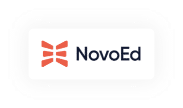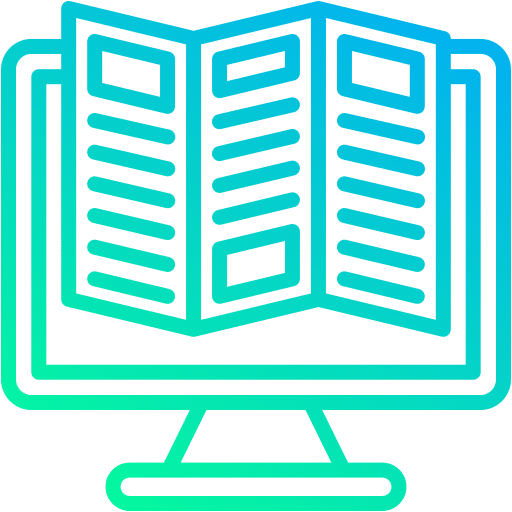Businesses have long utilized Learning Management Systems (LMSs). However, firm executives, learning specialists, and learners sensed something was missing as training requirements changed. A broad consensus was that a more diverse and active learning environment was necessary.

Top 12 LXP Features: The Complete List
Over the last decade, corporate training has altered drastically. The terms “lifelong learning,” “adaptive learning,” and “engaged learning” are becoming more common. In addition, trainers now provide eLearning using various custom-designed tools and technologies, allowing for highly personalized instruction.
Learning Experience Platforms are made up of the capabilities of those settings paired with the distinctive sorts of experiences offered to the learner (LXPs). “The LXP market alone is now over $350 million in size and more than doubling every year,” says Josh Bersin, founder of Bersin by Deloitte. It’s also changing at a rapid pace.” LXPs are now an essential element of the learning ecosystem.
Many organizations have experienced the disappointment of a new system failing after its launch. This failure is due to more than just the technology but also our understanding of how to use it properly. Launching a system with enough experience and knowledge will likely result in success. We need to change our methodology towards technology to prevent this. The solution is to educate ourselves about technology before investing. Therefore, it’s crucial to know what features to expect in a Learning Experience Platform, regardless of the vendor.
What is a learning experience platform?
The Learning Experience Platform (LXP) is a user-friendly learning platform that helps users discover new learning opportunities and create more tailored learning experiences. By synthesizing learning materials from many sources, suggesting and delivering them with the assistance of Artificial Intelligence across digital contact points such as desktop applications, mobile learning apps, and others.
Learning Experience Platforms (LXPs) focus on delivering content to employees and keeping them engaged with the content and each other. They achieve this through gamification features that make learning fun, competitive, or collaborative. LXPs also encourage team members to contribute their insights, lessons, and personal perspectives through user-generated content, making the learning experience more interactive and dynamic.
What are the differences between the LXP and the LMS?
An LMS (Learning Management System) is a virtual platform that allows administrators to assign and track highly organized training and educational content. A learning experience platform (LXP), on the other hand, is a consumer-oriented platform in which the user selects their learning from a varied array of personalized information. If an LMS is going to the movies, and LXP will watch videos on YouTube.
An LMS is a learning system where managers have complete control over the courses and track employees’ progress. On the other hand, an LXP gives employees control over their learning experience. It allows employees to learn at their own pace and choose the topics that interest them, providing a continuous flow of new information.
Discover the key distinctions between LXP and LMS to choose the right platform for your learning needs—Book A Demo now!
Top 10 learning experience platforms










Top 12 Learning Experience Platform features
Beyond the typical capability that one would expect from an LMS (such as assigning courses and material, supporting SCORM content, and even creating learning paths), below are the important characteristics that any solid LXP should provide.
- Encourages User Generated Content (UGC)
- Modern UI/UX
- Simplified Content generation & Curation
- Personalization as Standard
- Improved data analysis and reporting
- Mobile Compatible
- Brings people together
- Automated systems
- Social learning and Collaboration
- Rewards and Appreciation
- Capitalize innovative technology
- Artificial Intelligence (AI)
Encourages User Generated Content (UGC)
Content creation may be costly, time-demanding, and tiring. Similarly, having one source of truth (usually L&D) in an organization no longer resonates with learners. Variety is required. People learn best from others, which is why many L&D departments are turning to UGC to tap into employee knowledge and experience. This includes sharing screengrabs, webcam recordings, movies, photos, and inquiries, as well as internet information (such as site links and YouTube links).
Incorporating user-generated content can enrich the learning experience and give learners valuable insights from their peers. Moreover, user-generated content can be easily created and shared through an LMS, providing a collaborative and accessible learning experience for employees.
Modern UI/UX
A system that captures supports and disseminates all that material must look and feel current. It should be aesthetically appealing and intuitive for new users. Many modern systems emphasize a spectacular user interface (since most LMSs aren’t visually appealing).
However, poor user experiences frequently fail to deliver a great UI’s promise and expectations. Ensure it’s straightforward, easy to use on any device, and covers ALL workers’ digital literacy.
It means the system should be accessible on any device and provide all users with an improved and intuitive experience. A well-designed LMS can enhance the learning experience, increase engagement, and improve employee performance.
Simplified Content generation & Curation
Creating and populating content within the system should be straightforward. LXPs are learning ecosystems, which means they must be fed with information to grow. Fresh material helps to keep learners connected without requiring you to do any manual labor. So, in addition to the simplicity of use for learners, administrators will anticipate some assistance and support in keeping the platform updated with new learning content.
Expect it to:
Personalization as Standard
Personalization is something that your customers increasingly anticipate. 52% of consumers are willing to disclose personal information in return for product suggestions tailored to their specific requirements. The presence of personalization for every employee, regardless of the learning system you use, is crucial to its long-term success. This entails providing learners with personalized feeds and material depending on a variety of data factors, such as:
Behavior-based data
Learners are offered content depending on prior actions. What did they enjoy previously, whom did they know? What tags do they use? Who are they? The smarter technology is used, the more it learns about the user.
Structured data
In addition to behavioral data, intelligent systems should personalize job title, location, talents, duration of employment, and even past training.
Improved data analysis and reporting
The completion percentage as a significant metric of L&D performance is no longer appropriate. Instead, you want powerful reporting features to give you vital information on student behavior, content and platform performance, and even learner engagement. This information will enable you to iterate and enhance your efforts over time, which can only be beneficial, right? Look for systems that have AT LEAST this reporting capability as a standard feature:
- Dashboards that are visual and provide administrators a picture of overall performance are clear and simple to use.
- Reports that are automatically created based on significant events in the system. Imagine being advised that certain sorts of material do better than others or that certain times of day are more conducive to engagement. That’s a lot of power.
- Content performance by individuals
- Dashboards with KPIs (see above in terms of being visual and easy to interpret)
- Learning about their teams’ history and managers’ perspectives
- Standard compliance reporting (most businesses will need this, which is good)
Small and large data are becoming increasingly common in L&D, and having this data on hand will come in helpful later, even if you don’t need it right now. We guarantee it.
Mobile Compatible
Simple. Your learning platform will underperform on mobile if you don’t have a mobile app. With more and more companies using scattered, transitory workforces, the requirement for complete, real-time mobile learning assistance has never been greater. This is an absolute must-have feature if mobile learning is a priority for your company.
When choosing a learning platform, it’s important to ensure the mobile app is user-friendly and accessible across various devices, including smartphones and tablets. In addition to mobile app support, other essential mobile features include responsive design, offline access, and push notifications. With the increasing trend of remote work and the need for flexible learning options, a strong mobile learning capability can be a game-changer for your organization.
Brings people together
The fundamental aim of an LXP is to use technology to connect people better. Siloed data and communications systems are no longer sufficient in a world where workforces are global, home-based, and tech-savvy. Any Learning Experience Platform you evaluate should at the very least provide users with the following features:
- The capacity to follow like-minded individuals, be inspired by mentors, and interact with and engage newcomers.
- Create a profile page for yourself by sharing your knowledge, hobbies, and the stuff you engage with and share in one clear, easy-to-understand perspective.
- Sharing, like, and commenting on information allows for easy cooperation and participation.
- Integrations with TED, YouTube, and other sites make it simple to share and consume amazing information that isn’t limited to learning and development.
- New individuals to follow and communicate with are suggested to encourage greater networking and learning.
Most Learning Management Systems do not allow for quick and transparent communication amongst coworkers, resulting in a fully isolated and compartmentalized experience for everyone. An LXP should promote cooperation, sharing, and learning, with the ultimate objective of fostering a mentoring and developing culture inside your company.
By fostering a collaborative learning culture, an LXP can help build a strong sense of community among your employees. Encourage your team to share their knowledge, ask questions, and engage with others to create a dynamic learning environment. With the right platform, employees can feel more connected and engaged, increasing productivity and job satisfaction.
I am text block. Click edit button to change this text. Lorem ipsum dolor sit amet, consectetur adipiscing elit. Ut elit tellus, luctus nec ullamcorper mattis, pulvinar dapibus leo.













